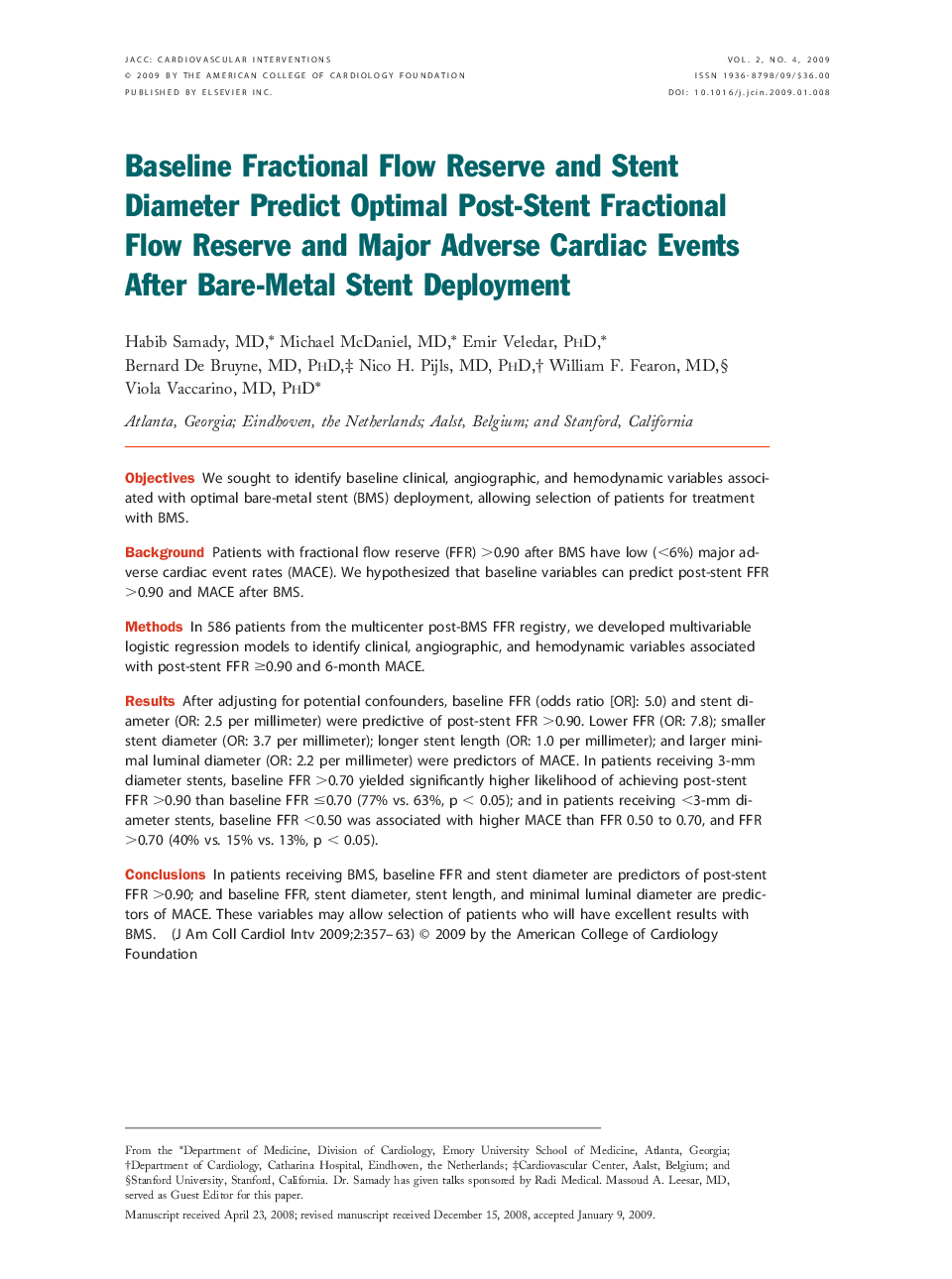| کد مقاله | کد نشریه | سال انتشار | مقاله انگلیسی | نسخه تمام متن |
|---|---|---|---|---|
| 2941641 | 1177079 | 2009 | 7 صفحه PDF | دانلود رایگان |

ObjectivesWe sought to identify baseline clinical, angiographic, and hemodynamic variables associated with optimal bare-metal stent (BMS) deployment, allowing selection of patients for treatment with BMS.BackgroundPatients with fractional flow reserve (FFR) >0.90 after BMS have low (<6%) major adverse cardiac event rates (MACE). We hypothesized that baseline variables can predict post-stent FFR >0.90 and MACE after BMS.MethodsIn 586 patients from the multicenter post-BMS FFR registry, we developed multivariable logistic regression models to identify clinical, angiographic, and hemodynamic variables associated with post-stent FFR ≥0.90 and 6-month MACE.ResultsAfter adjusting for potential confounders, baseline FFR (odds ratio [OR]: 5.0) and stent diameter (OR: 2.5 per millimeter) were predictive of post-stent FFR >0.90. Lower FFR (OR: 7.8); smaller stent diameter (OR: 3.7 per millimeter); longer stent length (OR: 1.0 per millimeter); and larger minimal luminal diameter (OR: 2.2 per millimeter) were predictors of MACE. In patients receiving 3-mm diameter stents, baseline FFR >0.70 yielded significantly higher likelihood of achieving post-stent FFR >0.90 than baseline FFR ≤0.70 (77% vs. 63%, p < 0.05); and in patients receiving <3-mm diameter stents, baseline FFR <0.50 was associated with higher MACE than FFR 0.50 to 0.70, and FFR >0.70 (40% vs. 15% vs. 13%, p < 0.05).ConclusionsIn patients receiving BMS, baseline FFR and stent diameter are predictors of post-stent FFR >0.90; and baseline FFR, stent diameter, stent length, and minimal luminal diameter are predictors of MACE. These variables may allow selection of patients who will have excellent results with BMS.
Journal: JACC: Cardiovascular Interventions - Volume 2, Issue 4, April 2009, Pages 357–363